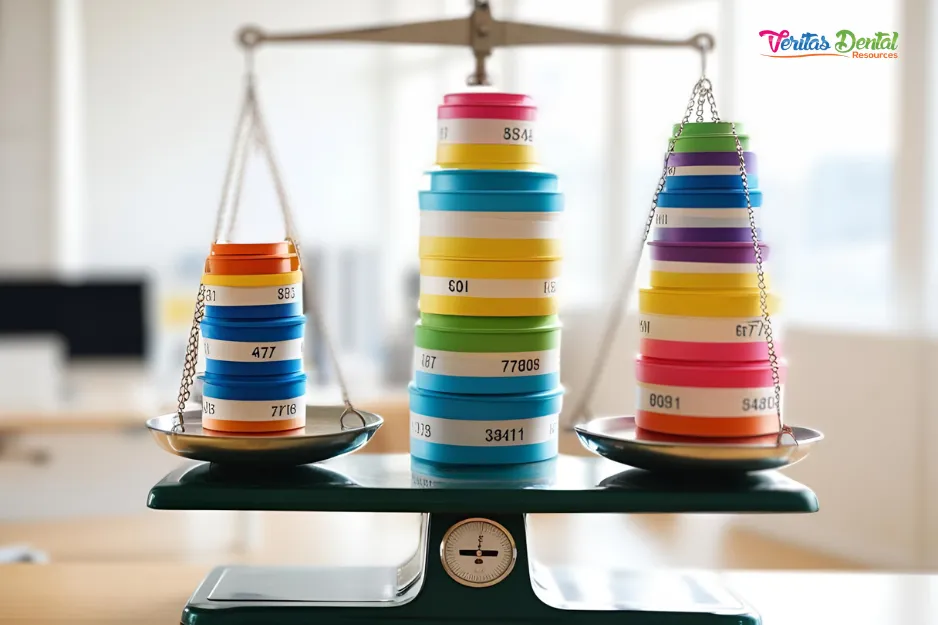
How Do Top Procedure Codes Weigh in with PPO Fee Negotiations?
Introduction
When negotiating PPO fees, not all procedure codes carry the same weight. Insurance companies base their fee schedules on various factors, and understanding how top procedure codes influence reimbursement rates can give you a strategic advantage. By focusing on the most frequently performed and highest-value procedures, you can maximize revenue and improve the financial health of your practice.
Why Top Procedure Codes Matter in PPO Fee Negotiations
High-Volume Codes Drive Revenue
A small percentage of procedure codes typically accounts for a large portion of revenue in a dental practice. Prioritizing these codes in negotiations can lead to significant financial improvements.
PPOs Base Reimbursements on Key Services
Insurance companies assess fee schedules by evaluating industry trends, regional data, and provider utilization of specific procedures.
Strategic Focus Improves Negotiation Success
Rather than attempting to increase all fees equally, targeting the most impactful codes allows for better leverage and higher negotiated rates.
Identifying Your Practice’s Top Procedure Codes
Before entering negotiations, analyze your practice’s billing data and identify:
The most frequently billed codes (high-volume procedures).
High-revenue procedures that significantly contribute to practice income.
Low-reimbursement codes where PPOs are paying far below your UCR (Usual, Customary, and Reasonable) fees.
Common High-Value Procedure Codes for PPO Negotiations
Here are some of the most important procedure codes to focus on:
Diagnostic & Preventive Codes
D0120 – Periodic Oral Evaluation
D0140 – Limited Oral Evaluation (Problem-Focused)
D0150 – Comprehensive Oral Evaluation
D0210 – Intraoral Complete Series (FMX)
D0330 – Panoramic Radiograph
D1110 – Prophylaxis (Adult)
D1120 – Prophylaxis (Child)
D1206 – Topical Fluoride Varnish
Restorative Codes
D2391 – D2394 – Resin-Based Composite Restorations (1-4 Surfaces)
D2740 – Crown (Porcelain/Ceramic)
D2750 – Crown (Porcelain Fused to High-Noble Metal)
D2950 – Core Build-Up, Including Any Pins
Periodontics & Endodontics
D4341/D4342 – Periodontal Scaling and Root Planing (Per Quadrant/Localized)
D4381 – Localized Delivery of Antimicrobial Agents
D4910 – Periodontal Maintenance
D3310-D3330 – Root Canal Therapy (Anterior, Bicuspid, Molar)
Oral Surgery & Implants
D7210 – Surgical Tooth Extraction
D7220-D7240 – Removal of Impacted Teeth
D6010 – Implant Placement
D6057 – Custom Abutment
D6058 – Implant Crown
Best Practices for Using Top Codes in PPO Negotiations
Analyze Your PPO Reimbursement Report
Review EOBs (Explanation of Benefits) to see what PPOs are currently paying for key procedures.
Identify low-reimbursing codes that should be increased.
Prioritize High-Impact Codes
Focus on codes that are frequently billed and have significant financial value.
Avoid wasting negotiation efforts on low-volume or rarely performed procedures.
Compare Your Fees to Industry Benchmarks
Use industry databases (NDAS, FAIR Health) to see how your PPO reimbursements compare to regional and national averages.
Make Data-Driven Requests
Present PPOs with justification for fee increases, including:
The frequency of the procedure in your practice.
Rising material and labor costs.
Regional market comparisons.
Negotiate for Strategic Increases
PPOs may not approve across-the-board fee increases, but they may allow adjustments on high-volume procedures that benefit both the practice and the insurer.
Consider Dropping Low-Paying PPOs
If a PPO consistently underpays and refuses to negotiate, consider whether remaining in-network is financially viable.
Conclusion
Top procedure codes play a vital role in PPO fee negotiations. By identifying your most frequently billed and highest-revenue procedures, you can strategically push for better reimbursement rates where it matters most. Regularly reviewing PPO fee schedules and using a data-driven approach ensures that your practice remains profitable while providing high-quality patient care.
Benjamin Tuinei
Founder - Veritas Dental Resources, LLC
Phone: 888-808-4513
Services:
PPO Fee Negotiators | PPO Fee Negotiating | Insurance Fee Negotiating
Insurance Credentialing | Insurance Verifications
Websites:
www.VeritasDentalResources.com | www.VerusDental.com

